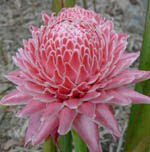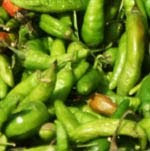
Ingredients & spices:
250 g Fine egg noodles
250 g Shrimps, raw or cooked
4 tablespoons cooking oil
1 Onion, finely chopped
3 cloves Garlic, finely chopped
1 Fresh red chili, seeded and sliced
1/2 teaspoon Dried shrimp paste
2 stalks Celery, finely sliced
1 teaspoon Salt
1/2 teaspoon Pepper
1-2 tablespoons Light soy sauce
Small wedge of cabbage, finely shredded
Garnish:
4 Spring onions
Thinly sliced cucumber
Fried onion flakes
How to prepare:
Soak noodles in hot water, while bringing large saucepan of water to the boil.
Drain noodles and drop into the boiling water, allow to return to the boil and boil from 1-3 minutes, depending on the noodles.
Some are cooked in the shorter time, while others take a little longer.
Keep testing one strand every half minute of so, because they must not overcook
As soon as they reach this stage, drain in colander and run cold water through them until cool or they will continue to cook in their own heat. Drain well.
Shell and de-vein shrimps.
Heat peanut oil in a wok or large deep frying pan and fry onion, garlic and chili until onion is soft and starts to turn golden.
Add dried shrimp paste.
Add shrimps and stir fry until cooked through.
Add celery, cabbage, salt and pepper and fry for a further minute or just until tender.
Vegetables should retain their crispness.
Add noodles and keep turning the mixture so that every part of it gets heated through.
Season with soy sauce to taste.
Pile into a serving dish and sprinkle onion flakes over the top.
Chop the spring onions, green leaves and all, and sprinkle over.
Arrange cucumber slices around edge of dish.














































